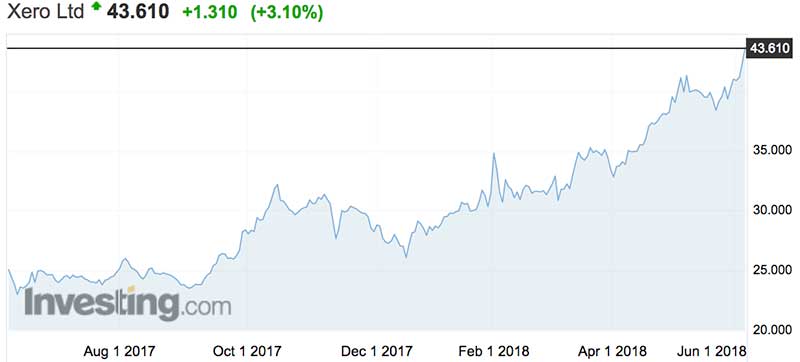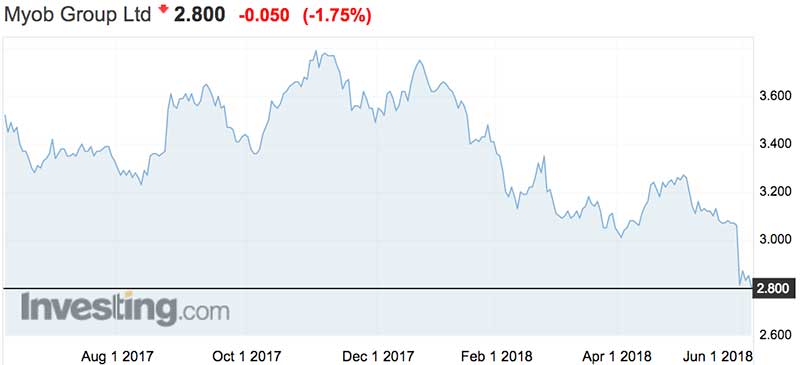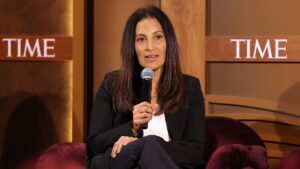Xero is looking like a better bet than MYOB, says Morgan Stanley

Pic: gorodenkoff / iStock / Getty Images Plus via Getty Images
Cloud accountancy software player Xero is expected to emerge the winner against older competitor MYOB in Australia, according to analysis by Morgan Stanley.
Analysts at the investment bank forecast Xero’s ANZ market share to move from 45 per cent of paying subscribers today to more than 60 per cent by 2021, underpinning the company’s above-industry 30 per cent revenue growth over the next three years.
“We think XRO is most adapted to the future environment,” write the analysts in a note to clients.
“With a pure SaaS (software as a service) business and no legacy business to protect, it will be quick and nimble to capture the lead as the market shift occurs.”
>> Read Stockhead’s guide to ASX-listed Software as a Service (SaaS) stocks
Morgan Stanley forecast MYOB’s market share to fall from more than 50 per cent to about 30 per cent over the three years, resulting in revenue growing at a weaker 8 per cent.
“MYO’s legacy business holds it back, resulting in an increasing divergence between the two stocks as time and technology progress,” write the analysts.
“XRO is also a global growth stock while MYO has no global growth aspirations. This further limits its options/expansion opportunities, in our view.”
Xero’s shares (ASX:XRO) are trading at near record highs — closing on Wednesday at $43.61, capping the stock at $5.6 billion.
The stock is up more than 4000 per cent since listing in 2007. Morgan Stanley believes there’s still 22 per cent upside and has a $50 price target.
Meanwhile MYOB’s shares (ASX:MYO) have fallen steadily this year, closing today at $2.80, valuing the company at $1.7 billion.
Morgan Stanley is Underweight on MYOB with a price target of $2.80 a share (which it hit today).
Here’s Xero’s share price graph over the past year:

And here are MYOB’s shares over the past year:

Xero, which started in New Zealand in 2007, has disrupted the Australian market against incumbents and has recently taken cloud leadership in the UK.
It has a first-mover advantage in cloud, a proven track record at market disruption, and high research and development investment that supports product leadership.
The company invests 35 per cent to 40 per cent of its sales ($140 million to $180 million) a year in research and development while MYOB invests 16 per cent ($70 million to $80 million) and competitor Reckon 19 per cent ($17 million).
“MYO’s legacy issues impede its ability to respond and consequently hamper its growth,” write the analysts.
“It’s still a good business, it’s just that it’s not a pure play on this theme and thus we prefer XRO which can invest 100% of its R&D into capturing the SaaS opportunity.”
Here’s where Xero sits in terms of sales growth against its competitors:
MYOB last month dropped a $180 million deal to buy a key part of competitor Reckon and is instead looking at a share buyback, greater investment in its platform and more sales and marketing resources.
The competition regulator, the ACCC, has competition concerns with MYOB’s proposed acquisition of Reckon’s Accountants Group because it could mean MYOB becoming the only supplier of practice software suitable for medium to large accounting firms.
- Bookmark this link for small cap breaking news
- Discuss small cap news in our Facebook group
- Follow us on Facebook or Twitter
- Subscribe to our daily newsletter
That left Reckon’s at near ten-year lows last week — forcing the company back to basics amid intensifying market competition.
MYOB now intends to invest more in the business rather than in acquisitions. This includes $50 million of research and development spend over the next two years to bring forward the delivery of MYOB’s online platform.
The company’s latest half year results showed revenue up 14 per cent to $204 million and after tax profit rising 13 per cent to $28.3 million.
Last month Xero announced a 38 per cent rise in operating revenue to $NZ407 million ($378 million) in its annual results.
This article first appeared on Business Insider Australia, Australia’s most popular business news website. Read the original article. Follow Business Insider on Facebook or Twitter.
UNLOCK INSIGHTS
Discover the untold stories of emerging ASX stocks.
Daily news and expert analysis, it's free to subscribe.
By proceeding, you confirm you understand that we handle personal information in accordance with our Privacy Policy.









